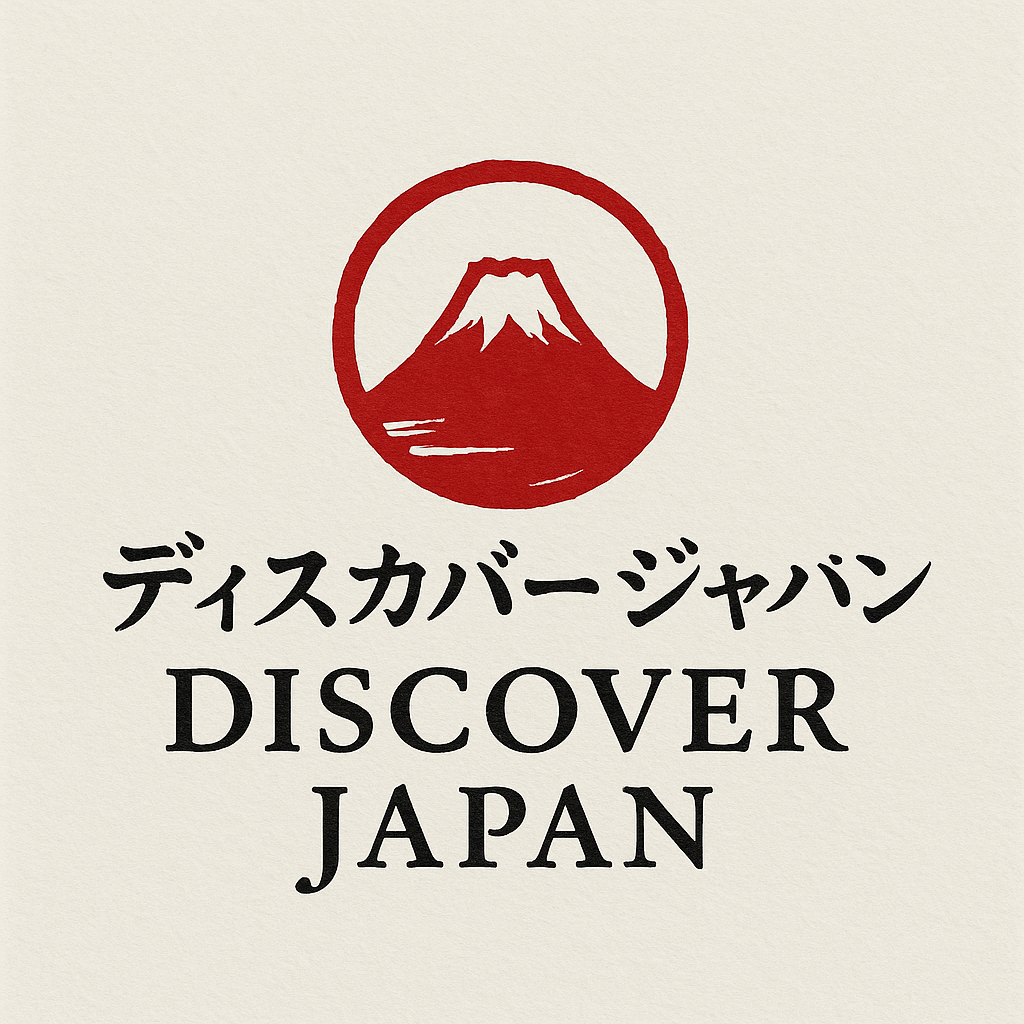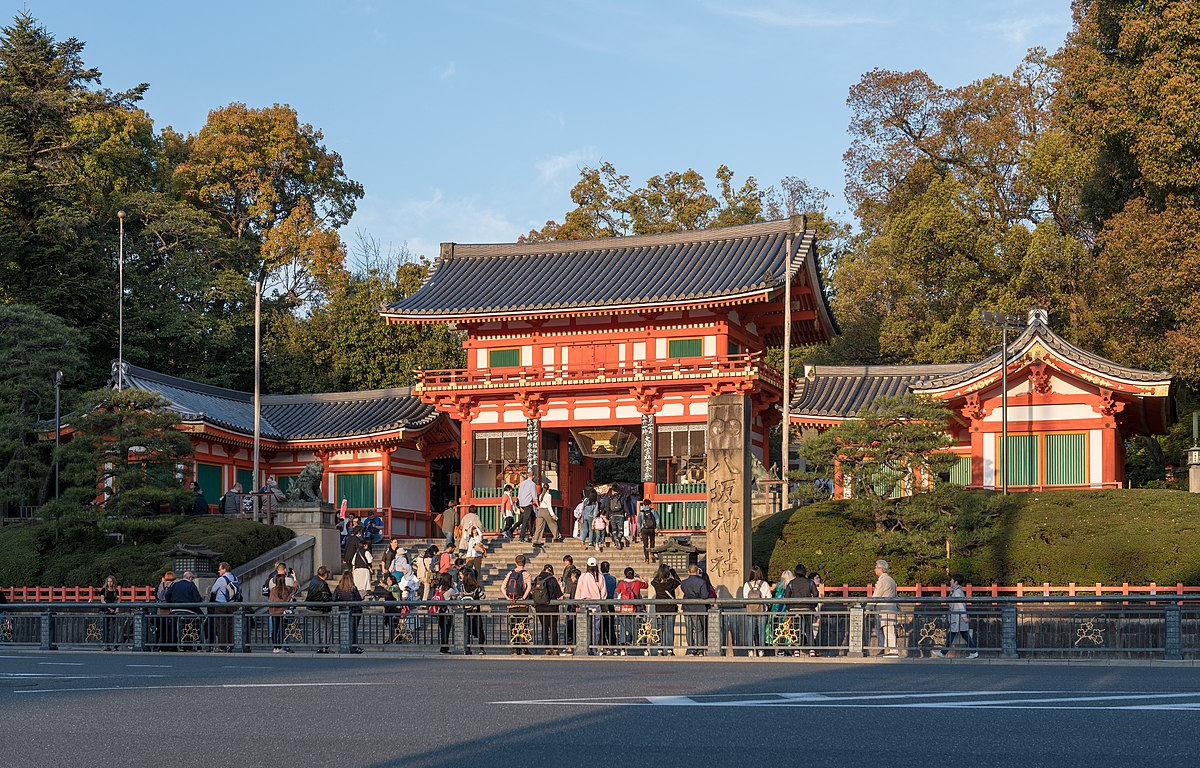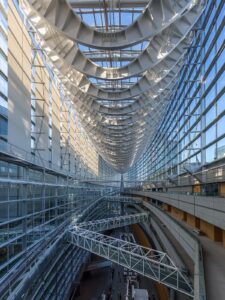TOC
Overview (history, characteristics, attractions)
Yasaka Shrine is an ancient shrine located in the Gion and Kiyomizu-dera area of Higashiyama Ward, Kyoto City, and is known nationwide as the central shrine of the Gion Festival. It was founded long ago, dating back to the 7th century (traditionally 656), and is one of the main shrines of the Gion faith, which originated as a ritual to ward off epidemics. The enshrined deity is Susanoo-no-Mikoto, and the shrine is characterized by the vermilion color of the shrine buildings, the lanterns on the approach, and the beautiful scenery lit up at night. The shrine's charm lies in its seasonal scenery, blending with the streets of Gion and the entertainment district, creating a Kyoto-like atmosphere.
Highlights
- Main hall and worship hall: This imposing vermilion-painted shrine building is where you can pray and receive amulets and temple seals.
- Lanterns and night view: The lanterns lit at night are very atmospheric, especially during the Gion Festival and when they are lit up specially.
- Gion Festival (July): A float procession and various events are held, attracting many spectators from all over the country.
- Small shrines and subsidiary shrines within the grounds: There are small shrines scattered around the temple, each with a specific purpose, such as for matchmaking, safe childbirth, or prosperous business.
- The adjacent Maruyama Park is especially famous for its cherry blossoms (night cherry blossoms), and is crowded with many visitors in the spring.
- Traditional events and rituals: Large and small Shinto rituals are held throughout the year, such as Setsubun and O-harae.
Access (nearest station, transportation, etc.)
- Nearest station: Keihan Gion-Shijo Station (approximately 3-5 minutes on foot), Hankyu Kawaramachi Station (approximately 10-15 minutes on foot)
- Bus: Kyoto City Bus stops such as "Gion" or "Shijo Keihan-mae" are convenient. From Kyoto Station, you can also access the area by city bus routes 100 and 206 (travel times vary depending on the destination).
- Walking distance: It is within walking distance of major tourist spots such as Kiyomizu-dera Temple, Gion, Hanamikoji, and Pontocho.
- By car: The surrounding area is a busy tourist spot and parking is limited, so we recommend using public transportation.
Estimated stay (estimated time required)
- Short visit: Approximately 30 minutes (including visiting the main shrine and purchasing a goshuin (red seal) and amulet)
- If you include a stroll around the surrounding area: 1-2 hours (including a stroll around Maruyama Park, Gion Street, and Hanamikoji)
- During the Gion Festival and nighttime viewing: It may take several hours depending on the crowds.
Nearby spots
- Gion (Hanamikoji Street): An area where you can enjoy maiko and traditional townscapes
- Maruyama Park: A famous cherry blossom spot, perfect for resting and strolling
- Kiyomizu-dera Temple (approximately 15-20 minutes on foot): A World Heritage temple representing Higashiyama
- Hokanji Temple (Yasaka Pagoda and Tower): Located within walking distance of Yasaka Shrine, you can enjoy picturesque scenery.
- Gion Kobu Kaburenjo and Pontocho: A place to enjoy food, drink, and traditional performing arts
Things to be aware of (crowds, manners, seasonal precautions, etc.)
- Crowds: It gets very crowded during the Gion Festival (July), cherry blossom season (late March to early April), and autumn foliage season (November). Early morning or early evening is a less crowded time.
- Worship etiquette: Please refrain from taking photos or holding parties for long periods of time in front of the worship hall, and please worship quietly. When receiving goshuin (stamps) or omamori (amulet charms), please follow the instructions at the shrine office.
- Photography: Generally, photography is permitted within the temple grounds, but please be considerate and ask for permission when photographing rituals or people (such as maiko). There are certain areas within the temple grounds where photography is prohibited, so please follow the signs.
- Bring cash: Most fortune-telling centres and fortune-telling booths require cash, so it's a good idea to bring some coins.
- Clothing and walking: The surrounding area is paved with cobblestones and slopes, so we recommend wearing comfortable walking shoes. Please be careful as the ground can be slippery in rainy weather.
- Nighttime Safety: While the area is beautifully lit up at night, some areas can get crowded, so please be sure to keep your valuables safe and be careful when walking.



